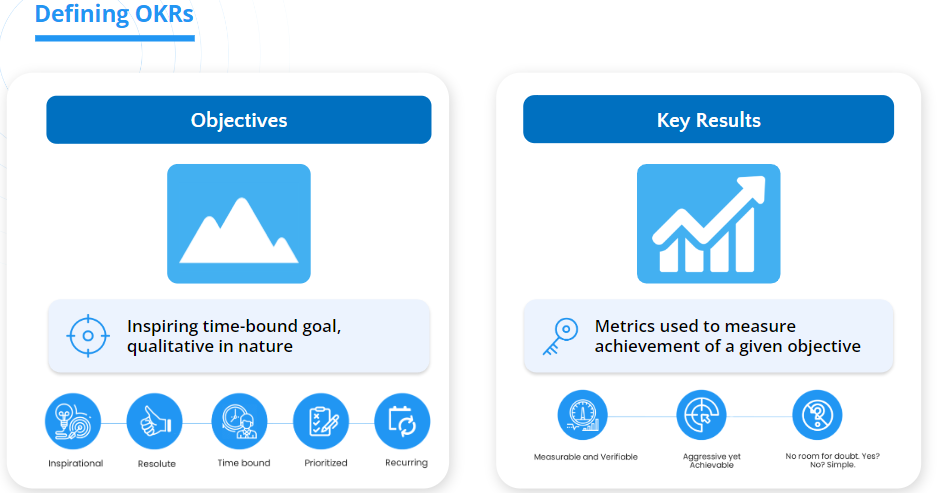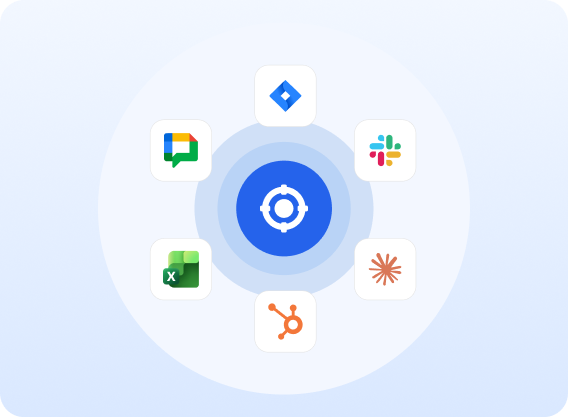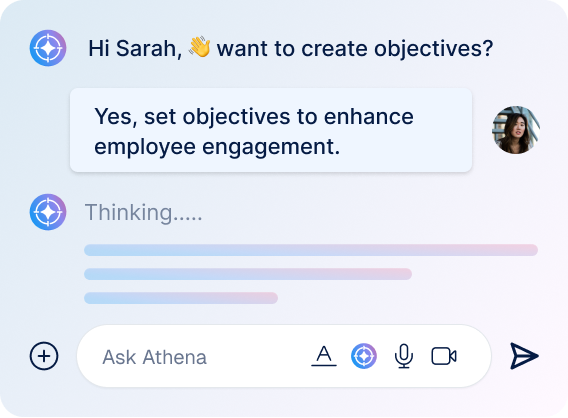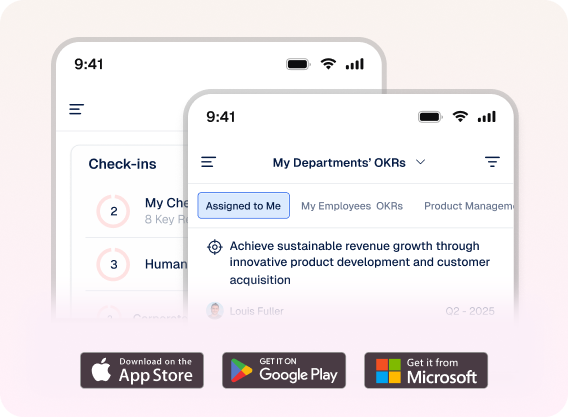Introduction
Public service is the cornerstone of any government. From maintaining order to fostering innovation, governments work tirelessly to deliver essential services and keep citizens safe. Achieving these goals efficiently is a constant challenge, especially in today’s fast-paced world. With shifting priorities, rapid technological advancements, and ever-tighter budgets, governments are expected to do more with less.
A McKinsey report estimates that in the U.S. alone, the potential productivity improvement opportunity in government is between $725 billion and $765 billion, equating to over $2,000 per resident. This statistic shows the importance of using a structured approach to plan and prioritize government strategies to make informed decisions and implement targeted interventions
Aligning everyone towards clear, shared goals is crucial for success. Over the years, many governments have embraced strategic planning, performance budgeting, and results-driven management. These practices aim to transform governments into well-oiled machines, delivering effective services. Transparent practices, like open data platforms and performance discussions, are essential tools for fostering trust and demonstrating responsible governance. This transparency not only builds public confidence but also strengthens the legitimacy of government operations.
Top Challenges Hobbling Government Efficiency
Governments today face a relentless struggle to translate strategy into efficient action. Here are three of the most pressing challenges:
Cost vs. Quality
Striking the right balance between cost efficiency and quality outcomes is a constant challenge. Traditional cost-cutting methods might only capture part of the picture, especially for government services. Accurate allocation of expenses is crucial to ensure resources are used effectively. Governments need to deliver quality services that meet public needs, as citizen satisfaction and trust hinge on this balance.
Slow Service Throughput
Even the best strategy can be hamstrung by sluggish service delivery. Measuring service throughput, the speed and volume of services delivered, is often overlooked. Focusing solely on cost efficiency can lead to missed opportunities to expedite service delivery. Faster turnaround times translate to a more responsive and efficient government.
Data Blind Spots
Without clear data on performance, it’s difficult to know if a strategy is working or identify areas for improvement. Metrics that track consumer experience and the impact of initiatives are essential. Reliable data empowers governments to make evidence-based decisions and adapt strategies as needed.
Given these existing efforts towards transparency and goal-oriented management, Objectives and Key Results (OKRs) emerge as a promising tool for unlocking even greater efficiency. By providing a clear line of sight from strategic objectives to measurable outcomes, OKRs offer a framework for focused execution and improved accountability.
Governments will always play a huge part in solving big problems. They set public policy and are uniquely able to provide the resources to make sure solutions reach everyone who needs them. They also fund basic research, which is a crucial component of the innovation that improves life for everyone.
What are OKRs?
OKRs are a goal-setting framework used by businesses and organizations of all sizes for strategy execution.They consist of two key components:

- Objectives: Ambitious, qualitative descriptions of what the organization wants to achieve in a specific timeframe. Think of them as the “what” – the overall direction and desired outcomes.
- Key Results: Measurable, time-bound outcomes that define how progress toward the objective will be tracked. They represent the “how” – the concrete metrics that demonstrate success.
To learn more about your OKRs
Can OKRs Be the Answer to Unlocking Government Efficiency?
Clear goals play a critical role in public organizations. Ambiguous objectives create a ripple effect, leading to inefficiencies, frustrated employees, and ultimately, a decline in public trust. Let’s see how OKRs can address these issues and become the game-changer for government efficiency.
Provides Direction and Purpose to Policy
OKRs provide a structured framework to align strategic governmental goals. Imagine a government workplace where every public servant knows exactly what they’re working towards and how their efforts contribute to the broader mission of serving the public. That’s the power of OKRs – they serve as the North Star for governmental operations. By clearly defining what needs to be achieved and how success is measured, OKRs eliminate confusion about roles and responsibilities. This newfound clarity empowers government employees with a strong sense of direction and purpose, fostering a more engaged and motivated public sector workforce.
Sharpening the Focus on the Delivery of Public Services
Forget the guesswork. With well-defined Key Results, measuring performance in government agencies becomes a streamlined and objective process. Cross-functional teams for strategic planning can break down bureaucratic silos and foster interdepartmental collaboration. By aligning actions across various governmental departments with the overarching goals set in OKRs, these teams can drive coordinated efforts and ensure that all public sector entities are working together seamlessly toward achieving the desired outcomes for citizens. This approach not only enhances the efficiency of public service delivery but also ensures accountability and transparency in government operations.
Boosting Employee Engagement through a Culture of Continuous Improvement
Public service is a calling, driven by a desire to make a real difference in people’s lives. Performance management practices are seen by administrators as essential tools to streamline processes, elevate service delivery, and ultimately, enhance public well-being. OKRs turbocharge this dedication to public value. OKRs are more than just numbers on a page – they foster a culture of continuous learning. Regular check-ins and feedback empower leaders to analyze past experiences and continually refine operations.
OKRs set clear, achievable objectives, igniting a sense of purpose and engagement within the workforce. By understanding how their efforts directly contribute to the broader mission of public service, government workers feel a deeper connection to their work. This translates to lower turnover and a more stable, high-performing public sector workforce.
Bridging the Gap Between Policy and Action
The road between well-intentioned policies and impactful action is often riddled with confusing priorities. OKRs offer a bridge to close this gap. By establishing clear objectives and measurable outcomes, government agencies can ensure their policies and programs are aligned with community needs and laser-focused on results. OKRs ensure policies address the most pressing issues facing the community, not just bureaucratic priorities, and measurable outcomes keep everyone focused on achieving tangible results. Beyond simply setting goals, OKRs involve the systematic collection and analysis of performance data, empowering government administrators to identify areas for improvement, optimize resource allocation, and make evidence-based policy decisions. This data-driven approach fosters a continuous improvement cycle, ensuring that government actions are not only effective but also directly aligned with the expectations and needs of the citizens they serve.

Building a Legacy of Progress: The Long-Term Impact of OKRs
The positive effects of OKRs extend far beyond the current fiscal year. By fostering a culture of continuous improvement and measurable outcomes, OKRs pave the way for long-term systemic improvements in governance and public administration. This translates to sustainable growth and development in critical areas like education, healthcare, and infrastructure, ultimately benefiting society as a whole.
- Education: By setting clear objectives for student achievement and measurable outcomes like graduation rates, OKRs can help ensure a well-educated workforce. Studies have shown a correlation between improved educational outcomes and long-term economic prosperity, with a high school diploma alone boosting lifetime earnings.
- Healthcare: OKRs focused on preventive care metrics and access to specialists can lead to a healthier population, reducing long-term healthcare costs and boosting overall well-being. Studies show that an increase in preventive care utilization can lead to a reduction in overall healthcare spending.
- Infrastructure: Setting measurable goals for infrastructure development, like improved road quality or expanded broadband access, can pave the way for long-term economic growth and increased connectivity. The American Society of Civil Engineers estimates a funding gap and addressing this gap through OKRs-driven, targeted investment can unlock significant economic benefits.
- Sustainability: OKRs can also contribute to long-term environmental and economic well-being. By setting clear objectives for resource conservation and environmental protection, governments can promote sustainable practices that benefit future generations.
By implementing OKRs, governments can build an efficient foundation for long-term success, ensuring a future marked by a well-educated citizenry, a healthy population, a robust infrastructure, and a sustainable environment.
Learn more about Profit.co and OKRs
Related Articles
-
How to Cascade OKRs Across Departments
TL;DR Cascading OKRs is the method of carrying company-level objectives down through departments, teams, and individuals, where each level adopts... Read more
-
How to Align OKRs Across a Large Enterprise Without Losing Momentum
TL;DR Most enterprises lose strategic momentum from misaligned goals. This guide shows you how to create clear OKR alignment using... Read more
-
How Should Enterprises Redesign OKRs for Better Execution at Scale?
A lot of companies try to use startup-style OKRs, only to find they fall flat as the business grows. This... Read more
-
OKR 101: 38 Most Common OKR Questions Answered
OKRs (Objectives and Key Results) are one of the most powerful ways to connect strategy with execution. Whether you're a... Read more




